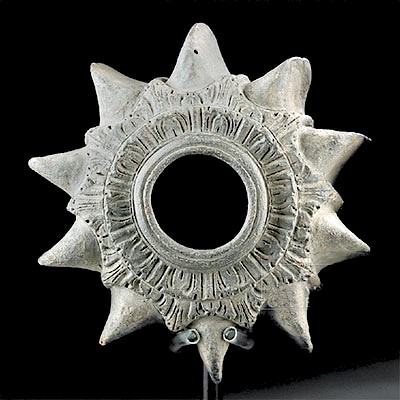Early 20th C. Asmat Skull w/ Beads, Wood, & Shells
Lot 119a
About Seller
Artemis Fine Arts
686 S Taylor Ave, Ste 106
Louisville, CO 80027
United States
Selling antiquities, ancient and ethnographic art online since 1993, Artemis Gallery specializes in Classical Antiquities (Egyptian, Greek, Roman, Near Eastern), Asian, Pre-Columbian, African / Tribal / Oceanographic art. Our extensive inventory includes pottery, stone, metal, wood, glass and textil...Read more
Categories
Estimate:
$4,000 - $6,000
Absentee vs Live bid
Two ways to bid:
- Leave a max absentee bid and the platform will bid on your behalf up to your maximum bid during the live auction.
- Bid live during the auction and your bids will be submitted real-time to the auctioneer.
Bid Increments
| Price | Bid Increment |
|---|---|
| $0 | $25 |
| $300 | $50 |
| $1,000 | $100 |
| $2,000 | $250 |
| $5,000 | $500 |
| $10,000 | $1,000 |
| $20,000 | $2,500 |
| $50,000 | $5,000 |
| $100,000 | $10,000 |
| $200,000 | $20,000 |
About Auction
By Artemis Fine Arts
Jul 25, 2019
Set Reminder
2019-07-25 10:00:00
2019-07-25 10:00:00
America/New_York
Bidsquare
Bidsquare : Pre-Columbian | Tribal | Ethnographic
https://www.bidsquare.com/auctions/artemis-gallery/pre-columbian-tribal-ethnographic-4291
Featuring ancient and ethnographic art from around the world, including Pre-Columbian, Native American, African / Tribal, Ethnographic, Spanish Colonial, Fossils, Fine Art, much more. Many Oceanic pieces from an important Tucson, Arizona collection, first time at auction!! Artemis Fine Arts info@artemisgallery.com
Featuring ancient and ethnographic art from around the world, including Pre-Columbian, Native American, African / Tribal, Ethnographic, Spanish Colonial, Fossils, Fine Art, much more. Many Oceanic pieces from an important Tucson, Arizona collection, first time at auction!! Artemis Fine Arts info@artemisgallery.com
- Lot Description
Indonesia, western Irian Jaya/West Papua, Asmat people, ca. early 20th century CE. A human skull decorated with wood, shells, and beads. The eyes are stuffed with soil and sap, with cowrie shells pressed into each socket. The nose is similarly decorated with soil and sap with shells and bright red beads pressed into them, forming a hook through which a carved wooden ornament has been inserted. Around the top of the skull is a woven textile band decorated with rows of cowrie shells and red beads. The skull itself has gained an incredibly rich patina from age and handling. Size: 5.45" W x 6" H (13.8 cm x 15.2 cm)
The Asmat people of Papua lived a traditional lifestyle until the 1950s, although the Dutchman Jan Cartensz (1623) and the expedition of Captain Cook (1770) had very limited contact with them. Their reputation as headhunters and cannibals kept outsiders away from their land. Traditionally, the Asmat venerated their ancestors through art, including by turning their skulls into dramatically ornamented sculptures. They blocked the nasal passages and the eyes, as here, in order to prevent the invasion of evil spirits. They displayed skulls like this one in small shrines within their homes.
Provenance: private Pennsylvania, USA collection; ex-private Philadelphia, Pennsylvania, USA collection; ex-private Colorado, USA collection, purchased in Papua New Guinea in the 1970s to early 1980s
All items legal to buy/sell under U.S. Statute covering cultural patrimony Code 2600, CHAPTER 14, and are guaranteed to be as described or your money back.
A Certificate of Authenticity will accompany all winning bids.
We ship worldwide and handle all shipping in-house for your convenience.
#147692Rich patina on all surfaces, especially the wood, skull, and shell. There is no lower jaw.Condition
- Shipping Info
-
All shipping is handled in-house for your convenience. Your invoice from Artemis Gallery will include shipping calculation instructions. If in doubt, please inquire BEFORE bidding for estimated shipping costs for individual items.
-
- Buyer's Premium



 EUR
EUR CAD
CAD AUD
AUD GBP
GBP MXN
MXN HKD
HKD CNY
CNY MYR
MYR SEK
SEK SGD
SGD CHF
CHF THB
THB















